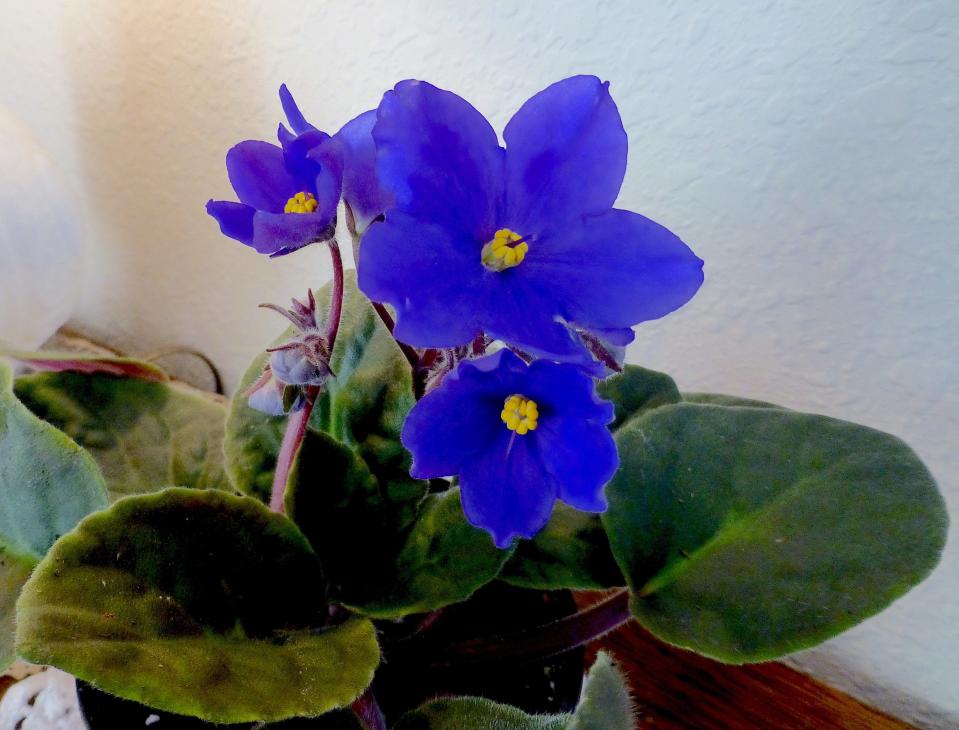Gardening for You: African violets keep on giving
How lovely would it be to give or receive a sweet flowering plant that will be around long after Valentine’s Day? African violets are just the right gift for Valentine’s Day since their language of flowers symbolizes devotion, faithfulness, and loyalty.

African violets are charming, small houseplants that produce clusters of showy blossoms that rise from the center of a whorl of fuzzy leaves. You almost cannot not touch the leaves but they are so tempting.
A little trivia for the Valentine who is lucky enough to receive an African violet: African violets are not true violets; they are called violets because the flowers resemble those of true violets. True violets are in the genus Viola in the family Violaceae and are native to Europe and Asia. African violets are in the genus Streptocarpus (formerly Saintpaulia) in the family Gesneriaceae (GES·neh·ree·aye·see·aye-ee) and are native to the tropical rainforests of Tanzania and Kenya in Eastern Africa.
African violets were introduced into North America in the 1800s but it wasn’t until 1927 when the first hybrid African violets were available; all had blue flowers. Blue (or purple) remains the most popular color today. In 1942, the first pink flowered plant was marketed, soon to be followed with a white blossomed African violet.
Today commercial varieties have nearly endless combinations of leaf shapes, flower color, and size. Leaf shapes can be plain, ovate, round, pointed, heart-shaped, lobed, serrated, scalloped, wavy, or ruffled; leaf color can be light green to deep red, variegated, striped, blotched, or speckled. Flowers can be single or double, variegated or solid in shades of blue, pink, white.
The growth habit of most African violet varieties today is the “Biedermeier” style introduced by German breeders: a single crown, clustered bouquet plant rather than multiples that were common up until that point. Size of African violet varieties can be large, 6 inch; standard, 4 inch; semi-mini, 3 inch; and miniature, 2 inch.

African violets are easy to grow given an optimum environment.
• Light. Give filtered sunlight. Bleached, light green leaves indicate too strong light; leggy and thin leaves, too little light. Spring and summer place in north or east windows that avoid harsh south and west light. Winter months switch orientation to provide more light.
• Water. Keep media moist, watering from below with room temperature water; water on the fuzzy leaves causes spotting. Stems are susceptible to rot if overwatered.
• Potting media. Grow in light and porous specialty blends to enhance aeration.
• Temperature. Optimum range between 75° to 85°F.
• To encourage blooms.
o Increase humidity. Place a layer of pebbles in a shallow tray of water under the pot.
o Let plants become rootbound by keeping in a 4 or 6 inch pot.
• Grow one plant per pot.
Giving an African violet is great way to ask “will you be my Valentine?”
Happy Valentine’s Day
Note: Some information from gesneriads.info; the African Violet Society of America; ngb.org
Ellen Peffley taught horticulture at the college level for 28 years, 25 of those at Texas Tech, during which time she developed two onion varieties. She is now the sole proprietor of From the Garden, a market garden farmette. You can email her at gardens@suddenlink.net
This article originally appeared on Lubbock Avalanche-Journal: Gardening for You: African violets keep on giving

